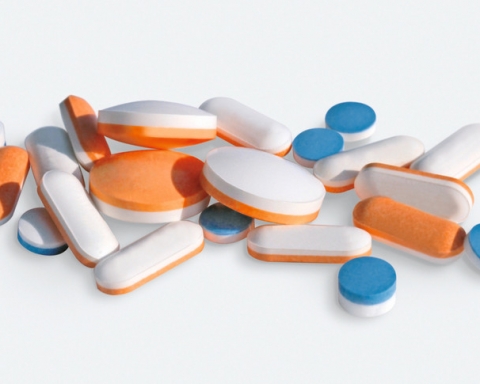The goal for most drug delivery systems is rapid dissolution of drug after administration; such products are called immediate release systems. The objective with these is to get the drug to the site of action or into the bloodstream as quickly as possible. The product is designed to give the fastest dissolution rate possible, with the assumption that this will give the fastest absorption and effect. As discussed, rapid dissolution can be achieved by increasing surface area A of drug particles (reducing particle size) and by using appropriate excipients to enhance solubility of drug in diffusion layer.
The following figure illustrates the drug release and dissolution process of an oral tablet. Immediate-release tablets are designed to undergo rapid disintegration to smaller granules and subsequent deaggregation to fine particles. A larger surface area is exposed to the dissolution medium, resulting in a faster dissolution rate than if the tablet were to dissolve intact. Excipients that facilitate disintegration (disintegrants) and deaggregation (surfactants) are usually included in immediate-release solid dosage forms.
When an immediate-release product is administered, the drug concentration in blood rises rapidly, peaks soon after administration, and then declines. If the peak concentration is too high, the drug may exhibit undesirable side effects. If the decline in blood concentration is also rapid, the product will have to be dosed frequently to maintain therapeutic blood levels. Such a large fluctuation in blood concentration may not be suitable for some drugs or may require dosing frequencies that are impractical.








